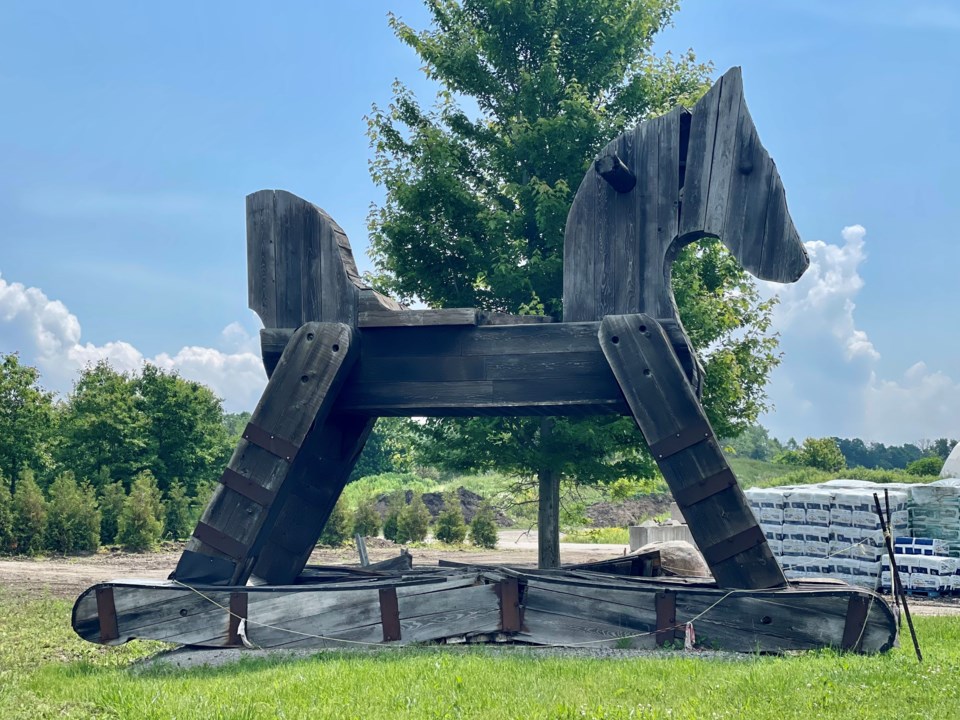A second opinion has confirmed it’s time to put an Innisfil attraction out to pasture.
Town staff reported to council at the June 28 meeting that the Giant Rocking Horse would simply cost between $50,000 and $100,000 to move from its current location at Spring Tree Farm on Innisfil Beach Road.
As such, it recommended the town not invoke its first right of refusal regarding the horse and allow Spring Tree to determine the horse’s future as it deems appropriate.
“I know in the town it is a bit of a neat spot that we have, but, unfortunately, it looks like the horse’s days are numbered,” said Coun. Kevin Eisses, who spurred staff to investigate the issue earlier in the year. “The cost to repair it back to give it a longer life is simply too much.”
The horse dates back to 2008 when it was built to act as a mascot for Pine by Monroe, located at the Innisfil Beach Road interchange along Highway 400. It was as a way to “make their business stand out” during the recession Eisses told his colleagues during Feb. 22 regular council meeting, a natural extension for the Monroes, as they had made smaller rocking horses in the store for years.
When the Monroes sold the property in 2015, the new owners, had no use for the horse, leading to the town purchasing it.
Since 2016, the horse has been housed at Spring Tree Farms near the Innisfil Beach Road and Yonge Street intersection, with the town holding a first right of refusal if Spring Tree wanted to remove it or dispose of it.
The next phase of the Innisifl Beach Road widening project put the horse in its cross-hairs, with the construction scheduled to move past the Spring Tree property.
Several factors make moving it a difficult task at best.
For starters, the horse was made from pine, echoing the types of furniture sold at Pine by Monroe, a soft wood better suited to indoor uses. Not only has the horse more than doubled in weight since construction due to the water the wood has retained, but it is also experiencing “significant rot” staff reported, especially in the rocker area.
“The structure would not be able to be moved without being taken apart due to the condition of the wood,” the staff report indicated. “The structure cannot be easily repaired and would essentially have to be rebuilt in order to bring it back to a condition closer to when it was constructed.”
Even if preventative measures had been previously taken to make the horse more durable to the elements, it still would be approaching the end of its lifespan.
“The cost of rebuilding the horse seems disproportionately high compared to the perceived value of keeping it as a landmark, particularly recognizing that the wood structure would eventually reach the end of its lifespan due to natural wear from the element," the staff report stated.
Staff did acknowledge some residents might be disappointed by the decision.
Eisses said those who want to go see it one more time shouldn’t hesitate.
“I would tell residents to enjoy it while you can,” he said, “It’s unfortunate that there’s not much else we can do.”
Staff’s recommendation was passed by council without debate.



